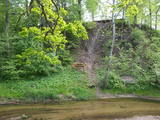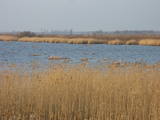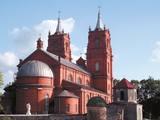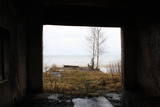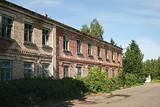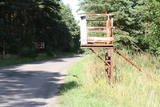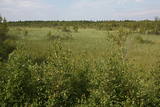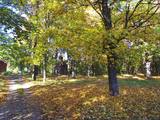| Нo | Название | Описание |
|---|---|---|
|
Тур из Риги в Таллинн представляет собой комбинацию природного и культурного наследия и включает в себя красивейшие пейзажи, а также 15 природных троп, которые пересекают болота, луга и леса вдоль побережья Балтийского моря, включая несколько охраняемых природных резерватов. Многие тропы оборудованы вышками для наблюдения за птицами. На лугах Ранду около Айнажи представлена одна треть всех видов растений Латвии. Дощатый настил для прогулок выведет вас к наблюдательной платформе, с которой можно увидеть луга и море. На острове Сааремаа увидите очень интересные и совсем иные, отличные от материка, природные достопримечательности - доломитные скалы, можжевельниковые пустоши, метеоритное озеро и скалистый берег моря. Маршрут проходит вдоль деревенских фермерских хозяйств и традиционных деревень, типичных для прибрежных областей. Остров Хииумаа — спокойное место, с типичной для Эстонии атмосферой, где находится важный резерват для птиц в заливе Кайна, необычный Сааре Тирп, а также несколько небольших островков вблизи его юго-восточного побережья. А на материке, на полуострове Палдиски, есть возможность ознакомиться с недавним прошлым в виде его бывшей советской военной базы. |
||
|
Легендарный ресторан Halinga расположен на обочине шоссе Via Baltica в получасе езды из Пярну в сторону Таллина. Ресторан гостеприимно открывает свои двери и для спешащих водителей, и для организации мероприятий, в том числе рассчитанных на большие группы. Здесь стараются использовать как можно больше местных продуктов, а еду готовят по местным рецептам. |
||
|
"Dobele Agra S.I.A." ir moderns, nākotnes perspektīvā domājošs lauksaimniecības uzņēmums Latvijā. "Dobele Agra S.I.A.", kas atrodas netālu no Dobeles - Krimūnās, kā viens no lielākajiem aramzemes apstrādātājiem Latvijā pašlaik apstrādā apmēram 5 800 ha lauksaimniecības zemes Dobeles un Jelgavas rajonos. Uzņēmums specializējas graudaugu audzēšanā pārdošanai vietējos un starptautiskajos tirgos, tādējādi gadā tiek saražotas apmēram 20 00 - 25 000 tonnas graudaugu, no kuriem lielākā daļa ir kvieši mieži, rapsis un pākšaugi. Pārsvarā tiek audzētas ziemas šķirnes. |
||
|
Сад на берегу реки Берзе называют как каменной сказкой, так и садом чудес. В сад помещены камни различных форм и размеров, жернова, верстовые и пограничные столбы. Каменную экспозицию дополняют декоративные растения и растительные композиции, о которых заботится хозяйка сада. |
||
|
The Vilce Nature Park is small in size and exists alongside the deep valleys of the Vilce River and its tributaries. Biotopes include visible sandstone cliffs, rapids on the rivers, forests typical of such areas, and the plants and animals that are found therein. The well-appointed Vilce castle hill is next to the Zaķu meadow, which is a nicely appointed and popular place for recreation. |
||
|
A shallow, eutrophic (more than 60% coverage), lagoon-type lake, which is a restricted area to protect the overgrowing lake and the damp meadows which surround it. There are some 60 species of nesting birds in the area. The system of dams on the southern shore of the lake can be used by visitors to look at the area.
|
||
|
Расположен в типичном сельском дворе Северного Курземе, где родился латышский писатель Эрнест Бирзниекс-Упитис (1871 - 1960). По субботам предлагается программа «Суббота в сельском дворе», во время которой можно познакомиться с сельской жизнью и принять участие в повседневных работах. Интересующиеся могут познакомиться с традициями выпечки хлеба конца XIX века или принять участие в латышском празднике всех праздников года. |
||
|
This is the only viewing platform of its kind. It is north of Pāvilosta, between the sea and Latvia’s largest gray dune. The second level of the platform offers a good view of the habitats which surround the dune, as well as the seashore and the largest seashore rock on the shores of the Baltic Sea – the Pāvilosta sea rock. You can also see the northern part of Pāvilosta. When it is windy outside, you’ll see kiteboard riders showing their tricks.
|
||
|
The café serves freshly prepared home-cooked food. "Cafe 21 & Putnu Dārzs" rents out rooms for banquets, celebrations, meals, buffets and seminars. Provides food delivery and off-site service. |
||
|
Наутренский (Роговский) Римско-католический костёл
Непорочного зачатия Девы Марии построен из кирпича в
романском стиле и c двумя высокими башнями (1901 – 1914 гг.)
вместо старого костёла. В 1939 году был приобретен орган –
памятник искусства.
|
||
|
Окинув сегодняшним взором, кажется невероятным, что какие-то двадцать лет тому назад на побережье располагались специально построенные сооружения с мощнейшими прожекторами, которые в темное время суток по специальным рельсам выталкивались на платформах с целью освещения близлежащей морской акватории и пляжа в поисках потенциальных нарушителей границы. От упомянутого объекта сохранились только развалины сооружений и прилегающей платформы, над которыми здорово потрудились волны моря.
|
||
|
Meklējamas Lizuma ciema dienviddaļā. Tās ir vienas no retajām vējdzirnavām (1880. g.), kas saglabājušās labā stāvoklī. Mūsdienās dzirnavas ir gleznotājas Ilonas Brektes īpašums. |
||
|
The trip starts in Kuldīga – a jewel among the old towns in Kurzeme. The town centre is home to historic buildings dating back to the 17th – 19th century. Cobbled streets of Kuldīga, old buildings, the river Alekšupīte, running through the town, St. Catherine’s Church and organ music concerts in it, gourmet restaurants and a country delicatessen shop in the town centre is a great travel experience to enjoy in a leisurely ambience of a small town. The red-brick bridge over the river Venta is a landmark of the town. The widest waterfall of Europe, Ventas rumba (width ~100 m) lies on the Venta. Venta river promenade is a popular place for walking along the riverbank. A private transfer will take you from Kuldīga to the village of Snēpele, where you will start your hike. The trail will take you to the Pelči Manor, the manor park and the deer park next to the guest house “Mazsālijas”. Next, the Forest Trail will lead you through the Abava River Valley Nature Park up to the town of Sabile. The latter is home to a winery and cider house “Sabiles Sidra nams”, which offers tastings and sells the local wine and cider. The section along the Abava River Valley Nature Park is the most diverse in terms of landscape and terrain of a river valley in Kurzeme. The river valley with its numerous habitats and vast biodiversity reaches a depth of 30–40 m and is more than 300 m wide. One will find springs, waterfalls, rock outcrops, and boulders here. After the Forest Trail has meandered through meadows, oak forests and hillocks it finally reaches the town of Kandava. |
||
|
Здание бывшей Морской школы – образование в Морской школе (1894 – 1914
гг.) получили более 1000 студентов. В советское время здесь размещался пункт пог-
ранохраны Советской армии. Сохранилась пограничная вышка. По дороге к морской
школе видны лесистые приморские дюны с небольшими строениями, создающими
интересный прибрежный пейзаж. Дорогу, соединяющую Морскую школу с морем,
когда-то называли Аллеей капитанов или Дорогой капитанов.
|
||
|
Ja mērķis ir savākt pilnvērtīgu etnogrāfisko ciemu fotokolekciju, ir jāapskata Strazdi (no lietuviešu valodas strazdai tulkojumā nozīmē strazds), kas ir pavisam neliela apdzīvota vieta Balošas (Baluošas) ezera ziemeļu krastā. Strazdi pirmoreiz rakstos minēti 1783. g. un ciema nosaukums cēlies no kādas mežziņu dzimtas uzvārda. |
||
|
Бывшее предназначение пограничной части в Озолили – связисты и учебный центр. В настоящее время на объекте располагается штаб и казармы Вентспилского батальона земессардзе. Территория закрыта для гражданских лиц. У дороги сохранились металлические конструкции – место проверки пропусков и документов.
|
||
|
Neliela ziepju un dažādu citu ķermeņa kopšanas produktu darbnīca. Pašu audzētos un saimniecības pļavās ievāktos ārstniecības augus iestrādā ziepēs un skrubjos, gatavo no tiem izvilkumus augu eļļās, kurus iekļauj lūpu balzamos un krēmos. Ziepes tiek vārītas tā, kā to darīja agrāk - no sārma un taukvielām. Apmeklētājiem iespēja ielūkoties “Ezervanna” mazajā darbnīcā, paklausīties stāstā par ziepju vārīšanu, iemēģināt roku un radošumu skrubju gatavošanā vai “pamīcīties” ar ziepju veidojamo masu un pagatavot savu ziepju gabalu. |
||
|
There is no need to enter the bog to see it, there are good views from the highway Ventspils – Riga (77 km, bus stop “Pagrieziens uz Elkskeni”). The main value of restricted area is chalky fen bog with brown bog-rush (greatest habitat finding in Latvia). Be careful when stopping on the highway – mind the traffic! A couple of kilometers towards Riga, on the right side of the highway, there is sign to Grizu Velna kresls ( Grizu Devil Chair) which is an attractive boulder (protected).
|
||
|
Часовня усадьбы Пуша – местный памятник архитектуры,
построенный в 18 веке. Находится в парке усадьбы Пуша. Парк разбит
в середине 19 века и является национальным памятником архитектуры.
|
||
|
Тропа длиной 2 км была создана в 1994 г. От автостоянки она вьется на берег долины Даугавы, где в окружении леса спряталось одно из самых маленьких латгальских городищ. Южную часть городища выкопали в 20-х годах 20 века, когда здесь добывали гравий. Площадка городища находится на высоте ~ 40 м над уровнем Даугавы, поэтому через небольшое смотровое отверстие открывается впечатляющий вид на долину реки. На обочине тропы недалеко от ручья Путану установлен столб, на котором обозначена максимальная отметка уровня воды на проектированной в то время Даугавпилсской ГЭС. В дальнейшем тропа ведет к деревне Слутишки. |
||







